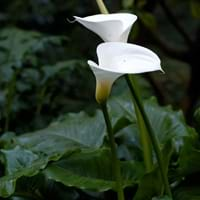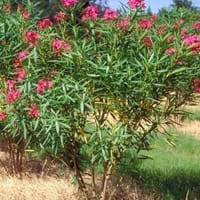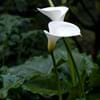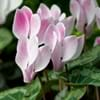Life Span
Perennial
Perennial
Type
Bulb, Flowering Plants
Flowering Plants, Shrub
Origin
South Africa, Swaziland
Southwest Asia
Types
Passionfruit, Fire glow, Gem rose, Blaze, Crystal blush
Calypso, Petite Salmon, Petite Pink
Number of Varieties
Not Available
Habitat
Swamps
dry rocky watercourses, Riverbanks
USDA Hardiness Zone
8-10
9-11
AHS Heat Zone
10-4
Not Available
Sunset Zone
2a, 2b, 5, 6, 8, 9, 12, 13, 14, 15, 16, 17, 18, 19, 20, 21, 22, 23, 24
Not Available
Habit
Clump-Forming
Bushy, Evergreen
Flower Color
Blue, Dark Purple, Light Purple, Red, White
Cream, Creamy Yellow, Pink, Purple, Red, White
Flower Color Modifier
Bicolor
Bicolor
Fruit Color
Not Available
Non Fruiting Plant
Leaf Color in Spring
Dark Green
Dark Green
Leaf Color in Summer
Green, Dark Green
Dark Green
Leaf Color in Fall
Green, Dark Green
Dark Green
Leaf Color in Winter
Green, Dark Green
Gray Green
Leaf Shape
Arrowhead
Long linear and narrow
Plant Season
Autumn, Spring, Summer
Fall, Spring
Sunlight
Full Sun, Part sun, Partial shade
Full Sun, Partial shade
Growth Rate
Medium
Medium
Type of Soil
Clay, Loamy
Marshy ground, Well drained
The pH of Soil
Neutral, Slightly Acidic
Neutral, Slightly Alkaline
Soil Drainage
Average
Well drained
Bloom Time
Spring, Summer
Summer
Tolerances
Wet Site
Drought
Where to Plant?
Container, Pot
Ground, Pot
How to Plant?
From bulbs, From Rhizomes, Seedlings, Transplanting
Layering, Seedlings, Stem Planting
Plant Maintenance
Medium
Low
Watering Requirements
Over-watering can cause leaf problems or root diseases, Requires a lot of watering
Water less during winter, Water more in summer
In Summer
Lots of watering
Lots of watering
In Spring
Moderate
Moderate
In Winter
Average Water
Average Water
Soil pH
Neutral, Slightly Acidic
Neutral, Slightly Alkaline
Soil Type
Clay, Loamy
Marshy ground, Well drained
Soil Drainage Capacity
Average
Well drained
Sun Exposure
Full Sun, Part sun, Partial shade
Full Sun, Partial shade
Pruning
Prune to stimulate growth, Remove dead or diseased plant parts, Remove deadheads
Prune in the late winter or spring, Remove shoots
Fertilizers
All-Purpose Liquid Fertilizer
All-Purpose Liquid Fertilizer, fertilize every 2-3 weeks while growing, Fertilize in early spring, Potassium
Pests and Diseases
Armillaria mellea, Gray mold, Leaf spot, Powdery mildew, Pythium rot, Rhizoctonia crown rot, Root rot, Thripes
Leaf spot, Mealybugs, Red blotch, Red spider mite, Scale, Scale insects
Plant Tolerance
Drought
Drought
Flower Petal Number
Single
Single
Showy Foliage
Yes
Unknown
Foliage Texture
Coarse
Medium
Foliage Sheen
Glossy
Matte
Attracts
Not Available
Mealybugs, Not Available
Allergy
Diarrhea, Intestinal gas, Vomiting
Phytodermatitis, Rash, Toxic
Aesthetic Uses
Beautification, Bouquets
Cottage Garden, Showy Purposes, Used in parkland
Beauty Benefits
Not Available
Not Available
Environmental Uses
Air purification
Air purification
Medicinal Uses
Not Available
Asthma, Cancer, Cardiotonic, Diabetes, epilepsy, Scabies
Part of Plant Used
Flowers
Flowers, Leaves
Other Uses
Showy Purposes
Used as Ornamental plant
Used As Indoor Plant
No
No
Used As Outdoor Plant
Yes
Yes
Garden Design
Not Available
Not Available
Botanical Name
Zantedeschia Aethiopica
Nerium
Common Name
Calla Lily
Oleander, Nerium Oleander
In Hindi
Calla Lily
ओलियंडर
In German
Calla-Lilien-
Oleander
In French
Lys calla
laurier-rose
In Greek
Calla κρίνος
Πικροδάφνη
In Portuguese
Calla
oleandro
In Polish
Calla Lily
Oleander
In Latin
Calla Lilium
Cleander
Phylum
Magnoliophyta
Magnoliophyta
Class
Liliopsida
Magnoliopsida
Order
Alismatales
Gentianales
Family
Araceae
Apocynaceae
Genus
Zantedeschia
Nerium
Clade
Angiosperms, Monocots
Angiosperms, Asterids, Eudicots
Tribe
Zantedeschieae
Wrightieae
Subfamily
Aroideae
Apocynoideae, Hippocastanoideae
Number of Species
Not Available
Importance of Calla Lily and Oleander
Want to have the most appropriate plant for your garden? You might want to know the importance of Calla Lily and Oleander. Basically, these two plants vary in many aspects. Compare Calla Lily and Oleander as they differ in many characteristics such as their life, care, benefits, facts, etc. Every gardener must at least have the slightest clue about the plants he wants to plant in his garden. Compare their benefits, which differ in many ways like facts and uses. The medicinal use of Calla Lily is Not Available whereas of Oleander is Asthma, Cancer, Cardiotonic, Diabetes, epilepsy and Scabies. Calla Lily has beauty benefits as follows: Not Available while Oleander has beauty benefits as follows: Not Available.
Compare Facts of Calla Lily vs Oleander
How to choose the best garden plant for your garden depending upon its facts? Here garden plant comparison will help you to solve this query. Compare the facts of Calla Lily vs Oleander and know which one to choose. As garden plants have benefits and other uses, allergy is also a major drawback of plants for some people. Allergic reactions of Calla Lily are Diarrhea, Intestinal gas and Vomiting whereas of Oleander have Phytodermatitis, Rash and Toxic respectively. Having a fruit bearing plant in your garden can be a plus point of your garden. Calla Lily has no showy fruits and Oleander has no showy fruits. Also Calla Lily is flowering and Oleander is flowering. You can compare Calla Lily and Oleander facts and facts of other plants too.





